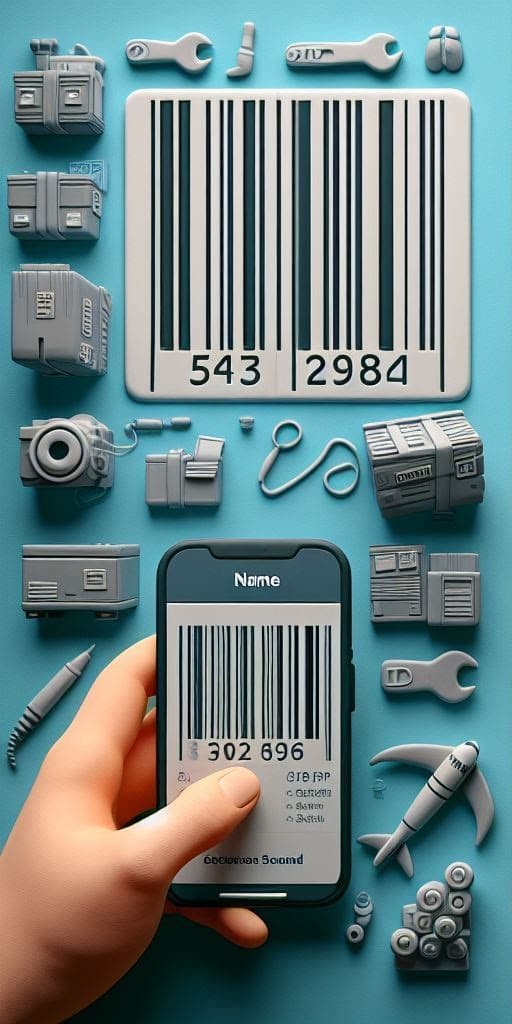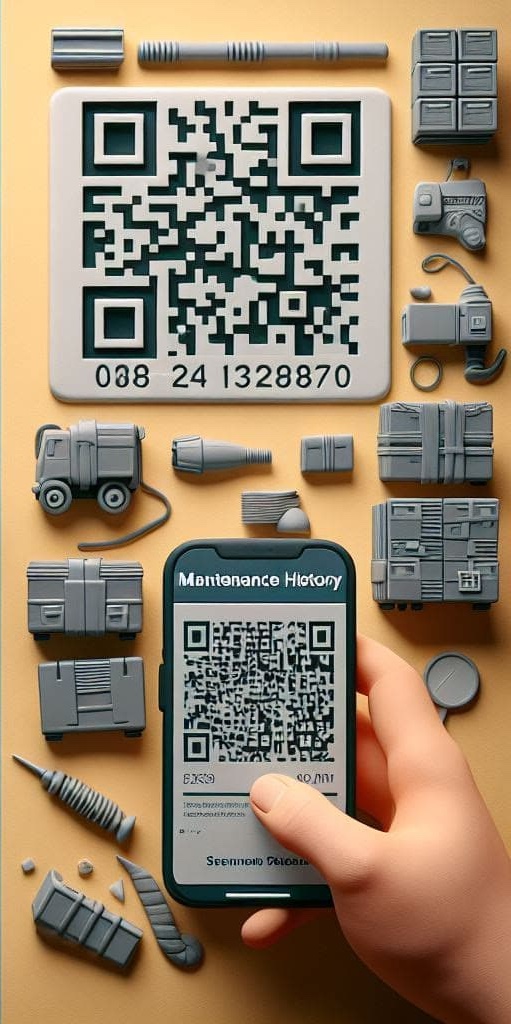Barcodes vs QR Codes for Asset Tracking
Which is Better for Robust Inventory Management?
Why QR Codes Are Superior to Barcodes for Advanced Inventory Management
Start Tracking NowAsset tracking is a critical process for any business that deals with physical inventory and equipment. Knowing exactly what assets you have, where they are located, and their status is key to efficient operations and cost savings. However, manually tracking hundreds or thousands of assets is an impossible task. That's where automated solutions like barcodes and QR codes come in. Both barcodes and QR codes allow you to tag assets with scannable codes that contain identifying information. But when it comes to robust asset tracking and inventory management, QR codes have some distinct advantages over old-school barcodes.
In this comprehensive guide, we'll break down the pros and cons of using barcodes versus QR codes for asset tracking. You'll learn how each technology works, how much data each code can hold, scanning reliability, security features, and overall recommendations for implementing the best asset tracking system. We'll also highlight how a purpose-built asset tracking software like ToolWorks can maximize the capabilities of QR code asset tracking.
What are Barcodes and How Do They Work?
Barcodes have been around since the early 1950s, and we’ve all become accustomed to seeing those black and white zebra code stripes on practically every consumer product. But barcodes aren’t just for grocery shelves and retail checkout lines. They also provide an inexpensive and straightforward way to implement asset tracking.
Barcodes are machine-readable codes that consist of varying widths and spacings of parallel lines. This linear 1D configuration encodes numbers, letters, and characters that get interpreted into data. For asset tracking, barcodes are printed onto asset tags, stickers, or directly onto the assets themselves. A dedicated barcode scanner is used to read the barcode, which extracts the asset's ID number or other basic identification data. This information gets looked up in a connected database, catalog, or asset tracking system.
Benefits of linear barcodes include:
- Inexpensive to produce and implement
- Universally recognized technology
- Accurate for basic product identification
- Requires minimal staff training
Limitations of barcodes:
- Very limited data storage - typically 25 characters or less
- Easily damaged and rendered unscannable
- Require line of sight scanning within a few feet
- Lack built-in data encryption
For basic inventory counts and supply chain management, barcodes perform the job reliably. However, they fall short when more advanced asset tracking capabilities are required.

QR Codes Offer Greater Capabilities for Asset Tracking
QR codes, short for Quick Response codes, were invented in 1994 to provide a more robust 2D machine-readable tagging system. They build upon the utility of linear barcodes by enabling omnidirectional scanning, larger data capacity, and damage resistance.
Visually, QR codes are distinguished by their square shape and pattern of black and white geometric shapes. This matrix configuration packs up to 100 times more data into the code than a tradition 1D barcode. QR codes can encode all types of data including website URLs, plaintext, documents, contact information, GPS coordinates, and more.
For asset tracking applications, some of the advantages of QR codes include:
- Stores exponentially more data than barcodes
- Scannable from any direction, at any angle
- Built-in redundancy compensates for damage or dirt
- Encrypted for added data security
- Scanned using smartphone cameras
By packing detailed asset data into a scannable QR code, businesses gain enhanced inventory tracking abilities. Critical information like asset ID, description, photos, maintenance records, rental status, and more can be embedded into the code. QR code asset tags empower field employees to quickly scan equipment using a company phone or their own mobile device. All the asset details are instantly accessible.

Comparing Barcodes vs QR Codes for Asset Tracking
Now that you understand the basics of how barcodes and QR codes work, let's compare some of the key factors to consider when choosing a tracking system.
Data Storage Capacity
The amount of data a code can hold is one of the starkest differences between 1D barcodes and 2D QR codes. Most standard linear barcodes max out at around 25 alphanumeric characters. This rules out storing meaningful asset descriptions, history, metadata, media, and other detailed tracking data.
QR codes, on the other hand, can pack thousands of characters into a scannable code. For example, a single QR code could contain:
- Asset name: DeWalt Impact Drill Model DCF885
- ID number: 85230192
- Category: Power Tools > Drills
- Description: 20V max lithium ion impact driver. Comes with 2 batteries and charger.
- Location: Tool Crib #2, Assembly Plant, 555 Main St.
- Photo of asset
- Maintenance notes
- Checkout status
- Date purchased
- Original cost
- Depreciated value
- And more!
This volume of data allows businesses to track assets throughout their entire lifecycle – from procurement to retirement. Robust data leads to better visibility and utilization.
Scanning Reliability
Barcodes require a straight-on line of sight scan within just a few feet. Any deviations or obstructions between the scanner and barcode will prevent scanning. This leads to trouble and delays for inventory management staff. Wrinkled barcode labels or slight damage also commonly hinders successful 1D scanning.
QR codes are engineered to be more resilient. The 2D configuration enables omnidirectional scanning from any angle. QR codes can be read even when wrapped around curved surfaces. These codes also have built-in redundancy to account for dirt, scratches, fading, and other imperfections. Up to 30% of a QR code can be damaged but still function correctly when scanned.
For assets used in demanding industrial conditions, outdoors, or in transit, QR codes are far more dependable for consistent scanning.
Security
When tracking expensive equipment, confidential files, or other sensitive assets, security is a concern. Linear barcodes have no native data encryption and are vulnerable to duplication if intercepted in transit. While adding barcode encryption is possible, it adds complexity and cost.
QR codes support native data encryption to protect the information within the code. This prevents unauthorized scanning of confidential asset details. Encryption also inhibits cloning or duplicating QR code asset tags.
Accessibility
With advances in technology, you can now leverage the camera functionality built into smartphones and tablets to read either barcodes or QR Codes. This removes barriers to adoption and makes asset data readily accessible to field teams, but due to nature of QR Codes, they are meany times quicker and easier to read than barcodes.
When to Use Barcodes for Asset Tracking
Given the clear advantages of 2D QR codes for robust asset management, you may wonder if linear barcodes have a place at all in modern tracking systems.
The reality is barcodes are so ubiquitous that they will never fully disappear. They remain an economical choice for basic inventory logging. If your asset tracking needs only require capturing product IDs and simple quantity counts, barcodes may suffice.
Some examples where standard barcodes still make sense:
- Tracking shelf inventory in a small retail shop
- Logging food supplies in a restaurant kitchen
- Simple equipment checkout lists on a construction site
For more complex assets that require extensive lifecycle tracking, QR codes are the superior barcode alternative. But in the right simple scenario, don't count out using tried and true linear barcodes.
Recommendations for Implementing QR Code Asset Tracking
Based on the benefits and uses summarized above, QR codes are recommended over barcodes for robust enterprise asset management programs. The expandable data capacity and resilience of QR codes empower businesses to track everything from individual high-value assets to entire inventories of tools, equipment, and consumable supplies.
To implement an effective QR code asset tracking system, here are some best practices:
- Catalog all trackable assets in a centralized database
- Assign each asset a unique ID number
- Print QR code labels encoded with asset IDs and descriptions
- Affix labels to assets and/or storage locations
- Download QR code reader apps to company mobile devices
- Scan QR codes whenever assets are checked-in, checked-out, moved, audited
- Leverage asset management software to unify tracking
ToolWorks Software for Effortless Asset Tracking
Manually coordinating asset tracking across multiple locations, departments, and employees is difficult, if not impossible without a unifying software solution. ToolWorks provides powerful centralized asset tracking software built for small to mid-size enterprises.
ToolWorks enables your team to create a master asset catalog containing all trackable items. This can range from high-value equipment and tools down to individual consumable items. Unique Barcode or QR code labels can be generated right within ToolWorks and printed for assets that lack existing barcodes.
Some key features that make ToolWorks the premier fixed asset tracking solution include:
- Centralized asset catalog visible across the organization
- Support for tracking tool, equipment, consumable, and bulk assets
- Dashboard showing asset availability across locations
- Mobile apps for field inventory management
- Asset checkout/return capabilities
- Transfers between locations
- Purchase orders and restocking
- Full maintenance work order lifecycle
- Extensive Reporting on asset